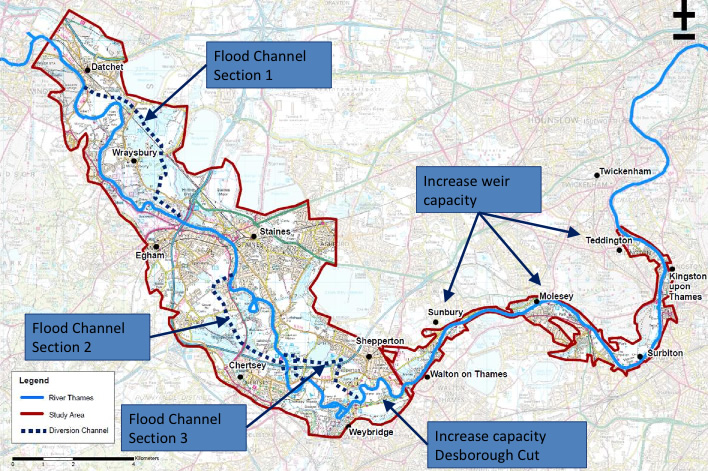After the severe and prolonged flooding early in 2014, the Environment Agency revived their proposed £256 million River Thames Scheme (RTS) to increase flood capacity at Sunbury, Molesey and Teddington weirs. Local people will be outraged to learn that the promised increase in flood capacity could be prevented by a new hydropower planning application at Teddington weir.
Residents of Sunbury and Shepperton were understandably cynical at the June flood meetings about the planned river by-passes from Datchet to Shepperton as most people believe the Jubilee River has made flooding much worse here. To avoid these schemes creating a worse flood risk downstream, the Lower Thames Flood Risk Strategy proposes betterment or compensation works at Sunbury, Molesey and Teddington weirs with ‘3-6 new large gates to increase flood flow capacities’. The EA suggested work on the weirs would start at Teddington as soon as 2015. This could help really Sunbury and Shepperton long before the by-passes could be built further upstream.
It is most surprising then to learn that Richmond Borough Council has received a Planning application submitted by Ham Hydro CIC to replace 21.3 metres of weir at Teddington with three hydropower turbines. Teddington is the most important weir being furthest downstream where water from a 10,000 km2 catchment area meets the incoming tides. This is the precise location for capacity improvements to drain future flood water away more quickly and effectively, which will be stopped in its tracks by this hydropower scheme at Teddington.
At the public flood meetings the EA explained they would be remodelling the 2014 flood data because of the extreme duration of the floods. Has Ham Hydro sneaked this Planning Application in before that remodelling is complete? Is Ham Hydro trying to prevent flood improvements, or to claim financial compensation from the EA when they can’t build their turbines?
It is even more surprising to note that the Ham Hydro Planning Application is supported by a Flood Risk Assessment (FRA) that used flood modelling undertaken in November 2011, ignoring the recent floods and crucially without examining the new 2014 flood modelling data. How can this be acceptable after the worst floods since 1948? Surely the proposed betterment /compensation works in this area of Teddington weir should be completed first and the increased capacity remodelled in a new Flood Risk Assessment before considering any hydropower scheme which might nullify the attempts to reduce flood risk from Datchet to Teddington.
Phillip Hammond, MP, confirmed that the “Lower Thames has the largest number of properties at risk from river flooding of anywhere in the UK” estimated to involve 15,000 homes and business, which would rise to 25,840 when taking account of the 20% expected increase resulting from climate change. By contrast the Ham Hydro scheme might provide electricity for 500 homes, when it’s operating. Of course it cannot operate in times of low water, high tides (when the flow reverses) or when it’s flooding – so that’s quite a lot of the time at Teddington weir!
Balanced against the very great harm done by flooding and the anxiety suffered, is this miniscule amount of potential electricity justified? Can this possibly be worth the misery, the cost of rescue and re-housing and the risk to health and safety of so many Thames valley residents?
What can we do now? If you are concerned about losing the promised RTS flood improvements, and living with an increased flood risk, please object to Derek Tanner at Richmond Borough Council quoting Ref: 14/3732/FUL. Alternatively, just Google: teddington weir 3732 to find the Planning application online.

